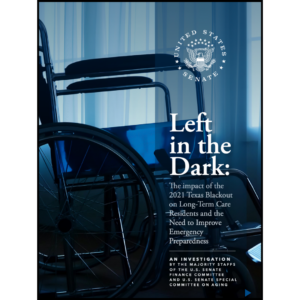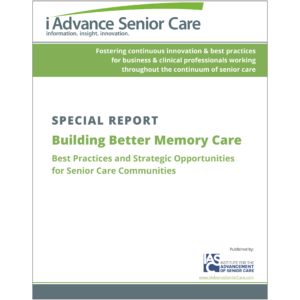Recovering from disaster in long-term care
As entire areas of the country continue on with the arduous task of recovering from the impact of Hurricane Sandy and a subsequent storm that plowed into several regions of the United States, a common refrain has emerged that is consistent with most disasters: “It was worse than we ever expected.” Unless you are on the receiving end of a crisis or disaster, most Americans are insulated from the reality and the true gravity of the situation. Unfortunately, a large section of our country has been given a dose of reality and must now pick up the pieces.
So, how do we recover from catastrophic events that we hope and pray never happen, especially since we now have a better understanding that they can indeed become our reality if we are in the wrong place at the wrong time? Consider all of the severe weather events that have battered our nation over the last two years, even before the major disaster in Joplin, Mo., where massive areas of the Midwest were ravaged by tornados in the spring of 2011 and again in 2012. Not to mention the devastation our country has suffered over the past two years by some of the most serious wildfires this nation has seen in modern times.
The answer is actually simple. Long-term care organizations of all types must “plan to recover.”
One of the main points in Disaster 101 (my term, not an official term) is that recovery starts in the response phase of disaster management. Taking that point one step further, disaster response starts with preparedness. Subsequently, when we prepare to respond we must also prepare to recover.
Stricken healthcare facilities of all types have realized this basic fact: If contingencies for disaster recovery were not established long before the destruction occurred, the challenges of recovery are exponentially magnified.
From a physical plant recovery perspective, it is essential for providers to select reliable disaster recovery and restoration firms that have been vetted long before an adverse event or disaster ever happens. I reviewed this concept in my September 19 Long-Term Living blog. If you think you will be able to obtain assistance without establishing a relationship with a trusted firm to provide essential services in advance of an adverse event, you will find that help may not be available or those offering “assistance" during time of peril could potentially take advantage of your organization during one of its most vulnerable periods of operation.
While the following is definitely not a scientific statement, I believe that a good percentage of disaster management (maybe 80 percent or so) is “getting your ducks in a row.” Most of this involves clerical tasks of establishing appropriate relationships that may be premised on contacts, formalized agreements and memorandums of understanding with vendors of essential services and other “like” facilities that may be needed to provide evacuation and relocation assistance during the disaster recovery phase.
Don’t wait to be a victim of an adverse event, crisis or disaster to consider the actions needed and services required to recover from all potential perils including fire, flood, power failure, severe weather, terror-related events, acts of violence, hazardous materials incidents or just about anything that can happen in your facility. No matter how much you may not want these perilous circumstances to occur, LTC providers as well as all citizens should be prepared for just about any type of emergency and establish solid contingencies to initiate recovery.
Simply stated: Plan to recover.

Stan Szpytek is the president of consulting firm Fire and Life Safety, Inc., in Mesa, Arizona, and is the Life Safety/Disaster Planning Consultant for the Arizona Health Care Association and California Association of Health Facilities. Szpytek is a former deputy fire chief and fire marshal with more than 35 years of experience in life safety compliance and emergency preparedness. For more information, visit www.emallianceusa.com or email Szpytek at Firemarshal10@aol.com.
Related Articles
Topics: Disaster Preparedness , Facility management , Operations











